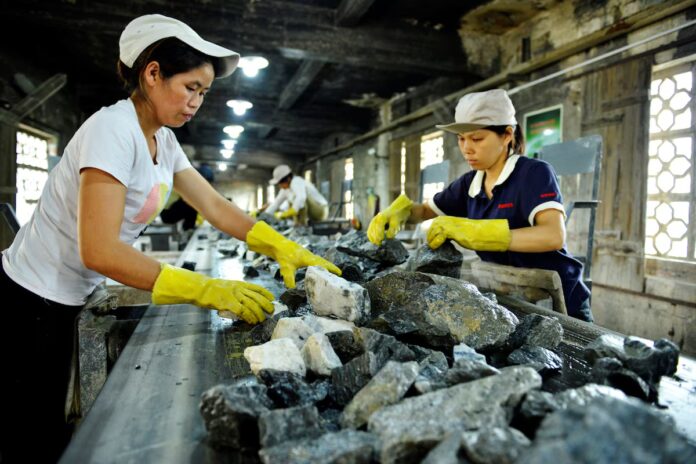
Global automakers are sounding the alarm on an impending shortage of rare earth magnets as China’s restrictions on the material vital for the automotive, defence and clean energy industries threaten production delays around the world.
German automakers became the latest to warn that China’s export restrictions threaten to shut down production and rattle their local economies, following a similar complaint from an Indian EV maker last week. U.S., Japanese and South Korean automakers warned President Donald Trump on May 9 car factories could close.
The restricted rare earths joined an export control list with over a dozen minerals and related materials already listed, in each case forcing exporters to apply to Beijing for licenses before selling overseas. China has also separately banned exports of gallium, germanium and antimony to the United States.
Below is a summary of all Beijing’s mineral export restrictions since 2023:
RARE EARTHS
China placed some rare earth magnets and seven rare earth elements – samarium, gadolinium, terbium, dysprosium, lutetium, scandium and yttrium – along with related items on an export control list in April.
While the announcement coincided with a broader package of retaliation against Washington’s tariffs, the controls apply globally and the government’s press release made no mention of the United States.
China produces around 90% of the world’s rare earths, a group of 17 elements used across the defense, electric vehicle, energy and electronics industries. The U.S. has only one rare earths mine and most of its supply is sent to China for refining.
While common in the Earth’s crust, China has mastered the technically difficult and environmentally harmful refining process. It produces almost 90% of global refined output.
China has spent years tightening its control over the rare earths sector. In December 2023, Beijing banned the export of technology to make rare earth magnets, adding it to an existing ban on refining technology.
Domestic production is tightly controlled by a system of quotas which are only granted to state-owned miners.
TUNGSTEN, INDIUM, BISMUTH, TELLURIUM AND MOLYBDENUM
China imposed export controls on the five metals used in defence, clean energy and other industries in early February, shortly after U.S. President Donald Trump’s first 10% tariff on Chinese goods took effect.
Licences are now required to export 20 tungsten, tellurium, bismuth, indium and molybdenum-related products. However the curbs stopped short of outright bans and were narrowly targeted in the cases of some metals, like molybdenum.
BATTERY, LITHIUM AND GALLIUM PROCESSING TECHNOLOGY
The announcement did not say when the proposed changes, which were open for public comment until early February, could come into force.
At least one company has stopped exporting products on the list since the proposal was floated.
ANTIMONY, GALLIUM, GERMANIUM
Last December, Beijing banned the export of the three critical minerals to the U.S. in response to a fresh crackdown on China’s chip sector from Washington.
The outright ban only applies to the U.S., however over the 18-months prior China had steadily introduced export licensing regimes for the three metals.
In the case of antimony, a strategic metal used in flame retardants, solar power equipment and munitions, exports to big buyers like Japan, India and South Korea had barely restarted three months after export licenses were introduced.
China dominates the supply chain for the three metals and mines or refines between half and 90% of global supply of those minerals.
GRAPHITE

